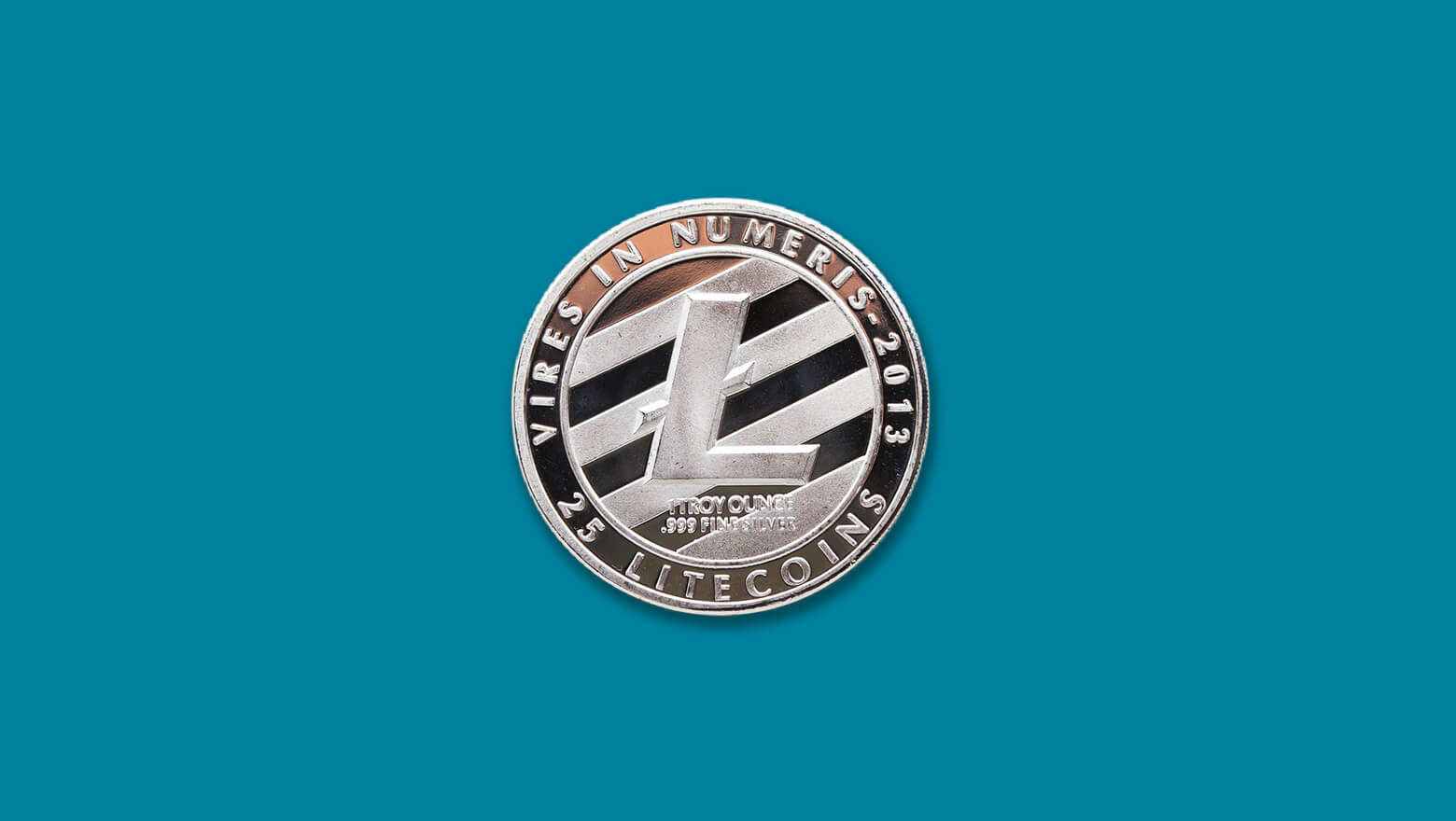Introduction
Welcome to the world of blockchain! In today’s digital landscape, cryptocurrencies and decentralized networks have gained immense popularity. One of the fundamental aspects of blockchain technology is the concept of transactions. Every transaction that occurs on a blockchain network is recorded and validated through a unique identifier known as a Transaction Hash ID.
A Transaction Hash ID, also referred to as a Transaction ID or TxID, is a string of alphanumeric characters that serves as a digital fingerprint for a specific transaction. It acts as a proof of the transaction’s occurrence and allows users to verify and track the progress of their transactions on the blockchain.
Whether you are new to the blockchain ecosystem or a seasoned user, understanding how to find a Transaction Hash ID is essential. This identification code provides a means of transparently monitoring transaction details such as sender and recipient addresses, the amount involved, and the confirmation status.
In this guide, we will explore various methods to find a Transaction Hash ID on the blockchain. Whether you need to track the status of a cryptocurrency transaction or validate a transaction for auditing purposes, these methods will help you access the necessary information.
What is a Transaction Hash ID?
A Transaction Hash ID, commonly referred to as a Transaction ID or TxID, is a unique string of characters that serves as a digital signature for a specific transaction on a blockchain network. It is generated through cryptographic algorithms and acts as an identifier to verify and track the progress of a transaction.
The Transaction Hash ID is a crucial component of the blockchain’s transparency and immutability. It provides a way to search and retrieve specific transaction details from the vast ledger. Every transaction on the blockchain, whether it involves the transfer of cryptocurrency, the execution of a smart contract, or any other activity, is associated with a unique Transaction Hash ID.
The Transaction Hash ID is created by combining the data of the transaction, including the sender and recipient addresses, the amount transacted, and any additional information that may be required. This data is then run through a cryptographic hash function, such as SHA-256, which generates a fixed-length string of characters that represents the transaction.
It’s important to note that the Transaction Hash ID is immutable, meaning it cannot be altered once it has been generated. This immutability ensures the integrity and security of the transaction history on the blockchain. If any modification is made to the transaction data, even a small change, the resulting Transaction Hash ID will be completely different.
By utilizing the Transaction Hash ID, users can verify the validity and authenticity of a transaction. They can cross-reference the Transaction Hash ID with the blockchain’s records to ensure that the transaction was indeed executed and is recorded on the ledger. This transparency and traceability are a key feature of blockchain technology, providing users with a higher level of trust and security.
Why do you need to find the Transaction Hash ID?
As a participant in the blockchain ecosystem, there are several reasons why you might need to find the Transaction Hash ID for a specific transaction. Let’s explore some of the key reasons:
1. Transaction Confirmation: Finding the Transaction Hash ID allows you to verify whether a transaction has been successfully executed and confirmed on the blockchain network. By checking the status of the Transaction Hash ID, you can determine if the transaction is pending, confirmed, or possibly rejected.
2. Transaction Tracking: The Transaction Hash ID acts as a unique identifier for a transaction. By finding the Transaction Hash ID, you can track the progress of a transaction and monitor its movement through the various blocks on the blockchain. This can be particularly useful when dealing with high-value transactions or when waiting for a specific transaction to be completed.
3. Auditing and Accountability: For individuals or organizations involved in financial or business transactions on the blockchain, finding the Transaction Hash ID is crucial for auditing and accountability purposes. It allows for transparent verification and proof of transaction history, ensuring that all transactions are accurately recorded and accounted for.
4. Cryptocurrency Exchanges: When dealing with cryptocurrency exchanges, finding the Transaction Hash ID is essential. It enables you to track the status of your deposit or withdrawal transactions, ensuring that your funds are properly accounted for and credited to your account.
5. Dispute Resolution: In the event of a dispute or discrepancy related to a transaction, having the Transaction Hash ID can serve as concrete evidence to support your claim. It provides a verifiable record that can be used to investigate and resolve any issues that may arise during the transaction process.
6. Transaction Details: The Transaction Hash ID allows you to access specific details of a transaction, such as the sender’s and recipient’s addresses, the amount transacted, and any associated messages or notes. This information can be vital for record-keeping and analysis purposes.
In summary, finding the Transaction Hash ID is important for verifying transaction status, tracking transactions, maintaining audit trails, resolving disputes, and accessing detailed transaction information. It provides transparency, traceability, and accountability in the blockchain ecosystem, ensuring the integrity and reliability of transactions on the network.
Finding the Transaction Hash ID on Blockchain
Now that you understand the importance of the Transaction Hash ID, let’s explore various methods to find it on the blockchain. Depending on your level of technical expertise and the tools at your disposal, you can choose from the following methods:
1. Using a Blockchain Explorer: Blockchain explorers are web-based tools that allow you to search and view transaction details on a specific blockchain network. Simply enter the public address associated with the transaction or the Transaction Hash ID itself into the explorer’s search bar. The explorer will then display the transaction details, including the Transaction Hash ID. Popular blockchain explorers include Etherscan for Ethereum and Blockchair for various blockchain networks.
2. Using a Wallet Application: Most cryptocurrency wallet applications provide transaction history and details, including the Transaction Hash ID. If you initiated the transaction using your wallet, you can typically find the Transaction Hash ID within the wallet interface. Look for a “Transaction History” or “Transaction Details” section, where you can locate the specific transaction and view its associated Transaction Hash ID.
3. Using Command Line Interface (CLI): Advanced users or developers who are comfortable working with command line interfaces can directly interact with the blockchain network to find the Transaction Hash ID. Depending on the blockchain network you are using, you can use the appropriate command-line tools and APIs to query and retrieve transaction information. This method requires technical expertise and familiarity with the specific blockchain network’s CLI commands and APIs.
When using any of these methods, it’s important to ensure you are accessing a legitimate and trusted source. Verify the authenticity of the blockchain explorer or wallet application you are using, and exercise caution when entering your private keys or sensitive information.
It’s worth noting that the process of finding the Transaction Hash ID may vary slightly depending on the blockchain network you are using. Different networks may have their own unique tools or methods for accessing transaction details. Therefore, it’s always recommended to refer to the official documentation or resources provided by the specific blockchain network for accurate information.
Now that you have an understanding of the different methods available to find the Transaction Hash ID, you can choose the most suitable approach based on your requirements and technical capabilities. These methods will enable you to access the necessary information about a transaction on the blockchain, ensuring transparency and facilitating further analysis or verification.
Method 1: Using a Blockchain Explorer
A blockchain explorer is a user-friendly web-based tool that allows you to search and view transaction details on a specific blockchain network. This method is commonly used by individuals who want to quickly find the Transaction Hash ID without requiring technical expertise. Here’s how you can use a blockchain explorer to find the Transaction Hash ID:
1. Choose a Blockchain Explorer: Select a trusted and reputable blockchain explorer that supports the blockchain network you are interested in. For example, Etherscan is a popular blockchain explorer for the Ethereum network, while Blockchair is a versatile explorer that supports various blockchain networks.
2. Access the Blockchain Explorer: Open a web browser and navigate to the website of the chosen blockchain explorer. Once on the explorer’s website, you will typically find a search bar or input field where you can enter the public address associated with the transaction or the Transaction Hash ID itself.
3. Enter the Transaction Details: Enter the relevant transaction details, such as the public address or Transaction Hash ID, into the search bar. Ensure the information is accurate to retrieve the correct transaction details.
4. Review the Transaction Details: Once you have entered the necessary information, click the search or submit button to initiate the search. The blockchain explorer will then display the transaction details, including the Transaction Hash ID. You can also find additional information such as the block height, timestamp, input/output addresses, and transaction status (pending, confirmed, etc.).
5. Copy or Record the Transaction Hash ID: Locate the Transaction Hash ID in the displayed transaction details. It is usually a long string of alphanumeric characters. You can either copy the Transaction Hash ID to your clipboard or write it down for future reference.
6. Verify and Track the Transaction: With the Transaction Hash ID in hand, you can now verify the transaction’s status and track its progression on the blockchain network. You can periodically check the blockchain explorer for updates on the transaction’s confirmation status or further details.
By using a blockchain explorer, you can easily access the Transaction Hash ID and gain insights into the specific transaction details. Keep in mind that the steps may vary slightly depending on the blockchain explorer and the network you are using, but the general process remains quite similar across different platforms.
Blockchain explorers provide a convenient and user-friendly method for individuals to interact with the blockchain and retrieve important information about transactions. They offer transparency and accessibility, ultimately empowering users to verify and track their transactions on the blockchain network.
Method 2: Using a Wallet Application
If you have initiated a transaction using a cryptocurrency wallet, you can typically find the Transaction Hash ID within the wallet application itself. This method is particularly convenient for individuals who are already using a wallet to manage their cryptocurrencies. Here’s how you can find the Transaction Hash ID using a wallet application:
1. Open your Wallet Application: Launch the wallet application on your desktop or mobile device. Ensure that you have logged in to your wallet and have access to the transaction history and details.
2. Navigate to Transaction History: Look for a section within the wallet application that provides transaction history or details. This section may be labeled as “Transaction History,” “Transactions,” or a similar term.
3. Locate the Specific Transaction: In the transaction history section, locate the specific transaction for which you need to find the Transaction Hash ID. Transactions are typically listed in chronological order, with the most recent ones appearing at the top.
4. Access Transaction Details: Click on or select the specific transaction to access its details. The wallet application will display a page or pop-up window with the relevant information related to the transaction.
5. Find the Transaction Hash ID: Within the transaction details, you should be able to locate the Transaction Hash ID. It is usually displayed prominently along with other transaction information, such as the sender’s and recipient’s addresses, the amount transacted, and any additional notes or messages.
6. Note or Copy the Transaction Hash ID: Once you have found the Transaction Hash ID, you can either write it down or copy it to your clipboard for future reference. This will allow you to verify and track the transaction on the blockchain.
7. Verify and Track the Transaction: With the Transaction Hash ID in hand, you can now use it to verify the transaction’s status and track its progress on the blockchain. Refer to the blockchain explorer associated with the cryptocurrency you’re using, or utilize other suitable tools to monitor the transaction’s confirmation status and other relevant details.
Using a wallet application to find the Transaction Hash ID is a convenient option for individuals already accustomed to managing cryptocurrencies through wallets. It provides direct access to transaction details and ensures that you can easily track and verify the progress of your transactions.
Keep in mind that different wallet applications may have slightly different user interfaces and navigation methods. Therefore, it’s essential to familiarize yourself with the specific wallet you are using and follow the appropriate steps provided by the application’s documentation or user guides.
Method 3: Using Command Line Interface (CLI)
For advanced users or developers who are comfortable working with command line interfaces (CLI), using the CLI can be an effective method to find the Transaction Hash ID. This method allows for more direct interaction with the blockchain network and provides greater control over querying and retrieving transaction information. Here’s how you can find the Transaction Hash ID using the CLI:
1. Access the Command Line Interface: Open the command line or terminal on your computer. Ensure that you have the necessary command line tools installed and configured to interact with the specific blockchain network you are using. This may involve installing specific software or setting up API connections.
2. Connect to the Blockchain Network: Use the appropriate commands or tools to connect to the blockchain network through the command line interface. This may involve connecting to a local node or utilizing remote nodes or APIs provided by the blockchain network.
3. Query the Transaction Information: Once connected to the blockchain network, use the appropriate commands or APIs to query the transaction information. You will typically need to provide certain parameters such as the transaction ID or public addresses involved in the transaction.
4. Retrieve the Transaction Hash ID: The command line interface will return the transaction details, including the Transaction Hash ID. It will usually be displayed as a string of alphanumeric characters. Note the Transaction Hash ID as it will be required for further verification or tracking of the transaction.
5. Verify and Track the Transaction: With the Transaction Hash ID in hand, you can now use it to verify the transaction’s status and track its progress on the blockchain. You can cross-reference the Transaction Hash ID with a blockchain explorer or utilize other suitable tools to monitor the confirmation status and other relevant details of the transaction.
It’s important to note that the specific commands and tools required to access and retrieve transaction information through the CLI can vary depending on the blockchain network you are using. Refer to the official documentation or resources provided by the blockchain network for accurate and up-to-date information.
Using the command line interface may require a higher level of technical expertise and familiarity with the specific blockchain network’s commands and APIs. It is recommended for advanced users or developers who have a deeper understanding of the blockchain technology and its underlying protocols.
By utilizing the command line interface, you gain direct control and flexibility in accessing and retrieving transaction details, including the Transaction Hash ID. This method allows for a more customized and tailored approach to querying blockchain data, enabling you to integrate it into your own applications or workflows if needed.
Tips for Finding Transaction Hash ID
When searching for the Transaction Hash ID on the blockchain, there are a few tips that can help streamline the process and ensure accurate results. Consider the following tips to enhance your experience:
1. Keep transaction details handy: Before initiating the search, make sure you have relevant transaction details readily available, such as the public addresses involved, transaction amount, and any additional information. Having these details at hand will help you retrieve accurate and specific results.
2. Double-check the Transaction Hash ID: When copying or entering the Transaction Hash ID, ensure there are no typos or mistakes. A single character error can lead to a completely different transaction. Verify the entered Transaction Hash ID for accuracy before proceeding.
3. Utilize trusted and reputable resources: Ensure that you use trusted blockchain explorers or wallet applications to access transaction details and verify the Transaction Hash ID. Be cautious of unofficial or suspicious platforms that may provide inaccurate or misleading information.
4. Cross-reference using multiple platforms: To validate the Transaction Hash ID and ensure its accuracy, consider cross-referencing the information using different blockchain explorers or wallet applications. This can provide an additional layer of verification and minimize the risk of relying on a single source.
5. Stay informed about blockchain updates: Blockchain networks and their associated tools can undergo updates and improvements over time. Stay informed about any changes to the network or the platforms you are using to search for the Transaction Hash ID. Keeping up-to-date will ensure that you are using the most reliable and efficient methods available.
6. Engage with the blockchain community: Participate in online forums, communities, or social media channels related to the blockchain network you are using. Engaging with the community can provide valuable insights and tips from experienced users who have successfully found Transaction Hash IDs or encountered similar situations.
7. Familiarize yourself with the specific blockchain network: Every blockchain network functions slightly differently, and their tools and terminology may vary. Take the time to understand the specific commands, APIs, or interfaces that are used to find Transaction Hash IDs on the network you are dealing with. This knowledge will help you navigate the process more effectively.
By following these tips, you can enhance your ability to find the Transaction Hash ID accurately and efficiently. The availability of reliable resources, attention to detail, and staying informed about updates will greatly assist you in retrieving the necessary information needed to verify and track transactions on the blockchain network.
Conclusion
Understanding how to find the Transaction Hash ID on the blockchain is essential for anyone involved in cryptocurrency transactions or blockchain activities. The Transaction Hash ID serves as a unique identifier that allows users to verify and track the progress of their transactions on the blockchain. Whether you are a novice or an experienced user, the methods discussed in this guide provide a range of options to access the Transaction Hash ID.
By using a blockchain explorer, you can easily search for and retrieve transaction details by entering the public address or Transaction Hash ID. Wallet applications offer a convenient way to access transaction history and find the associated Transaction Hash ID within the application interface. Advanced users can utilize the command line interface (CLI) to directly query the blockchain network and retrieve transaction details, including the Transaction Hash ID.
Regardless of the method chosen, it is important to keep transaction details readily available, double-check the accuracy of the Transaction Hash ID, and utilize trusted and reputable resources. Additionally, staying informed about updates to the blockchain network and engaging with the blockchain community can provide valuable insights and tips.
By following these guidelines and utilizing the appropriate methods, you can effectively find the Transaction Hash ID and gain transparency, accountability, and verification of your transactions on the blockchain. Remember, the Transaction Hash ID is a fundamental aspect of blockchain technology, enhancing trust and security in the digital ecosystem.
Whether you need to track the confirmation status of a transaction, validate transactions for auditing purposes, or resolve disputes, the Transaction Hash ID serves as a vital tool. The ability to access this unique identifier ensures transparency, traceability, and accuracy in the world of blockchain.
With the knowledge gained from this guide, you can confidently navigate the blockchain ecosystem, find Transaction Hash IDs with ease, and stay informed about your transactions on the blockchain network.

























